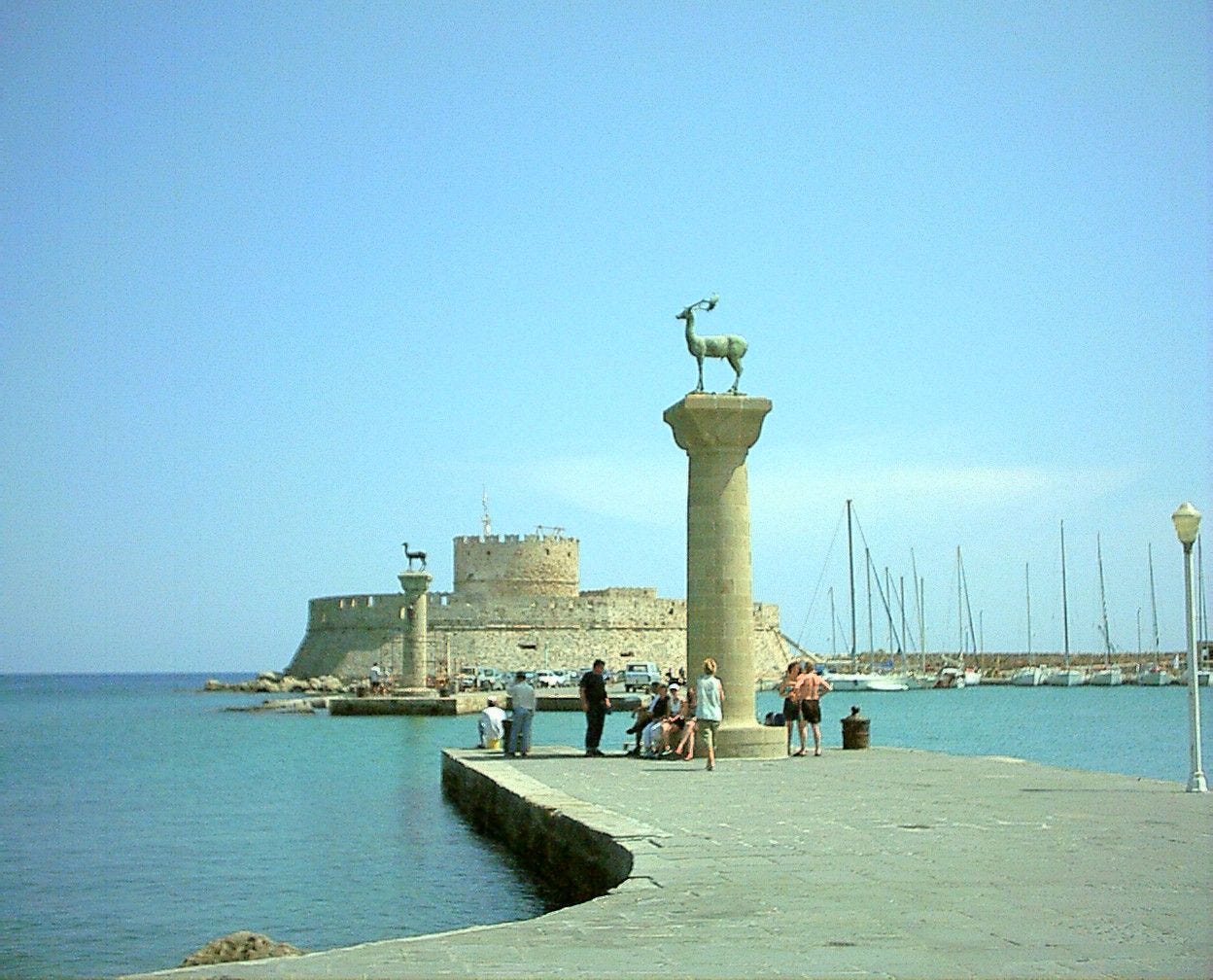
Where in the world?
La Juderia, was the former Jewish quarter of the city of Rhodes, Greece. The quarter was inhabited by Sephardic, Ladino-speaking Jews for half a millennium.
Although there has been a Jewish presence of some sort on the island of Rhodes for nearly 2,000 years, the inhabitants of La Juderia did not arrive until the 16th century, after they were expelled from Spain. At its peak the Jewish quarter was inhabited by 4,000 people.
Rhodes was governed by the Italians starting in 1923 and transformed over the next two decades until the Germans seized control in September 1943.
Who in the world?
The Jews of Rhodes lived within the bounds of the walled city, in the eastern section, in a separate, densely populated area with narrow, serpentine, cobbled streets, commonly referred to as La Juderia.
La Juderia was home to stone, palatial homes, as well as more humble dwellings built with mud-bricks for large families. Floor mosaics of white and black pebbles were fashionable in Rhodes for centuries.
Often, more than one family lived under the same roof; in such cases the families would have been related. The cortijos, the courtyards between houses, buzzed with news, and Judeo-Spanish (Ladino) songs were heard, keeping alive a centuries-old tradition.
The main street of the quarter was known for hundreds of years as La Kaye Ancha which in Ladino means “The wide street.” La Kaye Ancha was the main artery of the Jewish life in the city, the central gathering place through which weddings and other joyous processions passed.
When in the world?
During World War II, Allied bombing raids which targeted the old city of Rhodes in 1944 destroyed a significant portion of the city.
In July 1944, the Nazi authorities rounded up all 1650 residents of La Juderia and sent them first by boat and then by train to Auschwitz on what was the longest journey – measured by both time and distance– of any of the deportations. 1200 men, women, and children were murdered upon arrival at Auschwitz.
After the deportation of the Jews of Rhodes on the 23rd of July, 1944, La Juderia ceased to exist.
In 1988, the old town of Rhodes was designated as a World Heritage City by UNESCO.
Further Reading:
I am currently reading One Hundred Saturdays: Stella Levi and the Search for a Lost World by Michael Frank. Stella Levi is one of the last Jewish survivors of the Greek island of Rhodes. In the book, Michael Frank tells stories from their conversations where he visited Stella every Saturday for six years in her NYC apartment, and he turned their conversations into a book. Below is an excerpt:
[Stella Levi] “Are you interested in knowing how French served me in my life?”
Having discovered that I spoke Italian, she switched languages. As now so did I. “Certamente.”
“When I arrived in Auschwitz,” she said, “they didn’t know what to do with us. Jews who don’t speak Yiddish? What kind of Jews are those? Judeo-Spanish-speaking Sephardic Jews from the Island of Rhodes, I tried to explain, with no success. They asked us if we spoke German. No. Polish? No. French? ‘Yes,’ I said. ‘French I speak…’”
She paused. “I spoke French. Some French, because my sisters attended the Alliance Israélite Universelle. What they studied, they shared at home. Also I went on to study the language in school. Many of us girls from Rhodes did. Because we spoke French, at Auschwitz they put us with the French and Belgian women, who spoke French and Yiddish, and a little German too, enough so that they could translate and they could communicate. And they understood. Because they understood what was going on, they managed to survive –and therefore so did we.”
She sat back in her chair. “C’est comme ça que le français m’a servi dans ma vie.”



